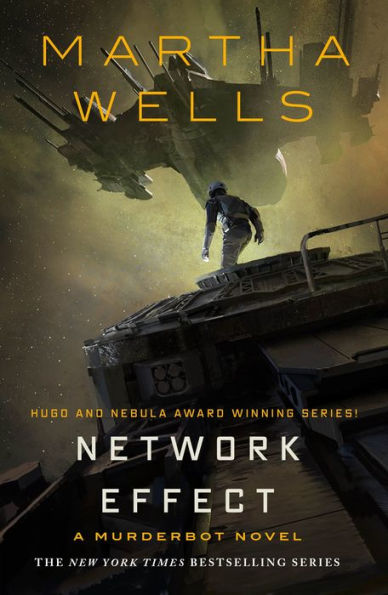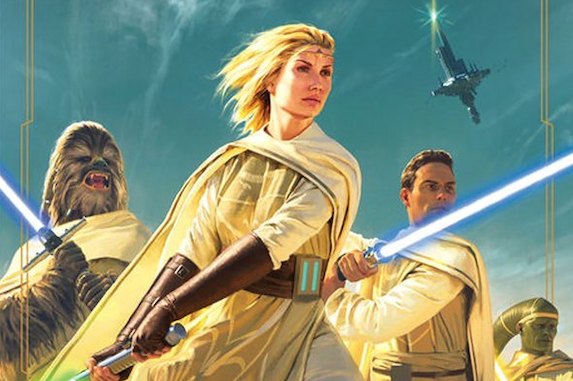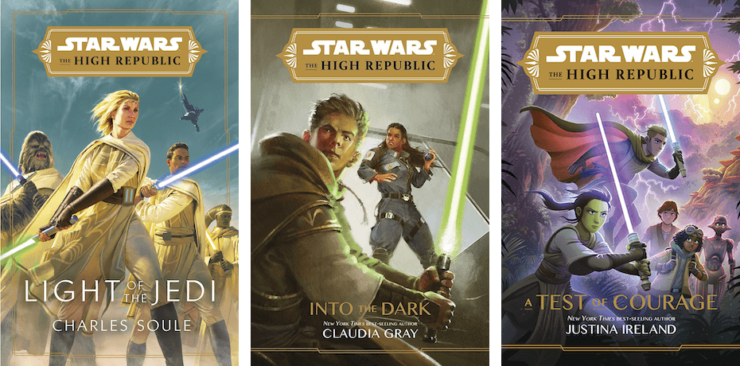On Monday, Lucasfilm unveiled its next big Star Wars publishing project: The High Republic, a sprawling, cross-medium series that will follow a number of characters as they deal with a galactic cataclysm centuries before the films take place.
While the project is set in an entirely new era, the structure of the series resembles that of another influential project that hit bookstores two decades ago: The New Jedi Order.
One of Star Wars’ key strengths as a franchise has been that it’s never been just a film series. Alan Dean Foster’s original novelization hit stores months before the film hit theaters, while West End’s roleplaying games and Marvel’s comics of the 1980s expanded and developed the world first introduced through the films.
Over the course of the 1990s, Lucasfilm’s publishing program helped sustain the legions of Star Wars fans out there, first with books like Timothy Zahn’s Heir to the Empire, and later with more ambitious projects, like the X-Wing series and Shadows of the Empire, each of which utilized books, comics, and video games to tell their stories. These projects had practical uses as well: they helped demonstrate to Lucasfilm that such licensee synergy could not only work, but be successful in keeping the dedicated Star Wars fans engaged with the franchise as a whole.
The New Jedi Order
But no project up to that point had been quite as ambitious as the one that they launched in 1999: The New Jedi Order. Set 21 years after the fall of the Empire, the galaxy has finally found some measure of peace: the remainder of the Imperial forces had since surrendered, and Luke Skywalker had been hard at work rebuilding the Jedi Order.
That peaceful era abruptly changes as a new alien civilization called the Yuuzhan Vong entered the galaxy, bent on conquering the galaxy to build a new civilization for themselves. They were unlike anything the franchise’s heroes had faced up to that point: powerful and wielding organic technologies, they were religious zealots who sought to destroy anything that stood in their way and couldn’t be sensed in the Force.
Buy the Book


Network Effect
The project came about as Lucasfilm decided that they needed to shake up the ongoing storylines: the long line of Expanded Universe novels followed the adventures of Luke Skywalker, Leia Organa Solo and Han Solo, but had largely been safe from any significant changes. The NJO was an opportunity to change that. The first novel, R.A. Salvatore’s Vector Prime, killed off Chewbacca during the initial invasion, and over the course of the 19 novels and associated other shorter works, Lucasfilm and its authors challenged the characters in a number of ways. Some significant characters met their ends, like Chewbacca and Anakin Solo (Han and Leia’s third child), while also introducing or developing new/newer characters, like Ganner Rhysode and Tahiri Veila.
The resulting series was both successful and controversial: its long length led many to feel that it meandered and lost focus (at several points, there were several novels that were written and then canceled, like Michael A. Stackpole’s Dark Tide: Siege, and Michael Jan Friedman’s Knightfall trilogy), while others felt that it was too grim and strayed too far away from the spirit of the franchise. But looking back, the NJO appears to be a landmark project not only in how it approached the world and characters, but how it shaped the projects that came after.
The successor series, such as Troy Denning’s Dark Nest trilogy, which took place in the aftermath and the nine-book Legacy of the Force series, felt as though they were more focused. Even the Clone Wars series set between Attack of the Clones and Revenge of the Sith, which saw crossovers between comics, novels, video games, and a TV series, felt as though it was contributing to a more cohesive story that felt more like Star Wars than the NJO.
But despite the drawbacks, the NJO attracted millions of readers who were heavily invested in the characters and storylines, and who remained engaged with the franchise as a whole.
The High Republic
On its face, Lucasfilm’s new initiative looks as though it shares a number of parallels with the New Jedi Order. The galaxy is enjoying an era of peace, which is shaken up by some sort of cataclysmic event that prompts the Jedi Order to take a greater role in protecting their home and the Republic.
Like the NJO, this project involves multiple authors working across a wider continuity, one designed to inject a new sense of danger and risk to the characters. While this series is set prior to the events of the Skywalker Saga, it feels removed enough from that series and its associated works to largely stand on its own. And unlike the handful of books that came up over the course of the sequel trilogy, it’s a bigger story that doesn’t have to tip-toe around the whims of filmmakers who are largely steering the ship when it comes to story direction.
But the series has its changes as well. For one, the story looks as though it’ll be spread out across a wider range of audiences, from Middle Grade to Adult novels, as well as comics and tie-in materials. And where the NJO was essentially an event series designed to shake up the franchise, The High Republic looks as though it’s launching an entire, full-throated sub-franchise, complete with its own characters, arcs, and settings, one that is recognizably “Star Wars,” but which retains its own look and feel, enough to stand on its own.
Incubator
But while this series and the New Jedi Order are far enough removed from the Skywalker Saga, they could potentially play a big role in the future of the franchise.
Presently, Disney has put the film franchise on ice while it works out what to do next, while it plays out some of its other offerings—The Mandalorian and the untitled Cassian Andor and Obi-Wan Kenobi projects—in more familiar times. The future of the franchise is no trivial thing for the studio, because of the value it holds at future box offices in the decade to come.
But nailing whatever films and TV shows come out is a challenge. While fans have their own expectations, any future installment will have to go beyond rehashing the stories and elements that made the films popular in the first place.
Project Luminous, Lucasfilm says, was an opportunity for a number of authors and content strategists at Lucasfilm to figure out what they wanted to see in the franchise, and stake out those desires in a new environment. On one hand, it’s a publishing project that only dedicated fans will read: their numbers are dwarfed by the people who are only going to head out to theaters to see the latest film. Using a series of books and comics will give Lucasfilm some more information, and will hopefully give them room to experiment and see what things click with the franchise’s fans, before they commit to a film project that costs hundreds of millions of dollars.
Hopefully, The High Republic will do all of those things: introduce new characters and designs for fans to latch onto, provide some surprises and thrills to long-term fans who have become jaded with age, and at the very least, tell an interesting story about the galaxy far, far away.
Andrew Liptak is a writer and historian from Vermont. He is the author of the forthcoming book Cosplay: A History (Saga Press, 2021), and his work has appeared in Clarkesworld, io9, Lightspeed, Polygon, Tor.com, The Verge, and other publications.











